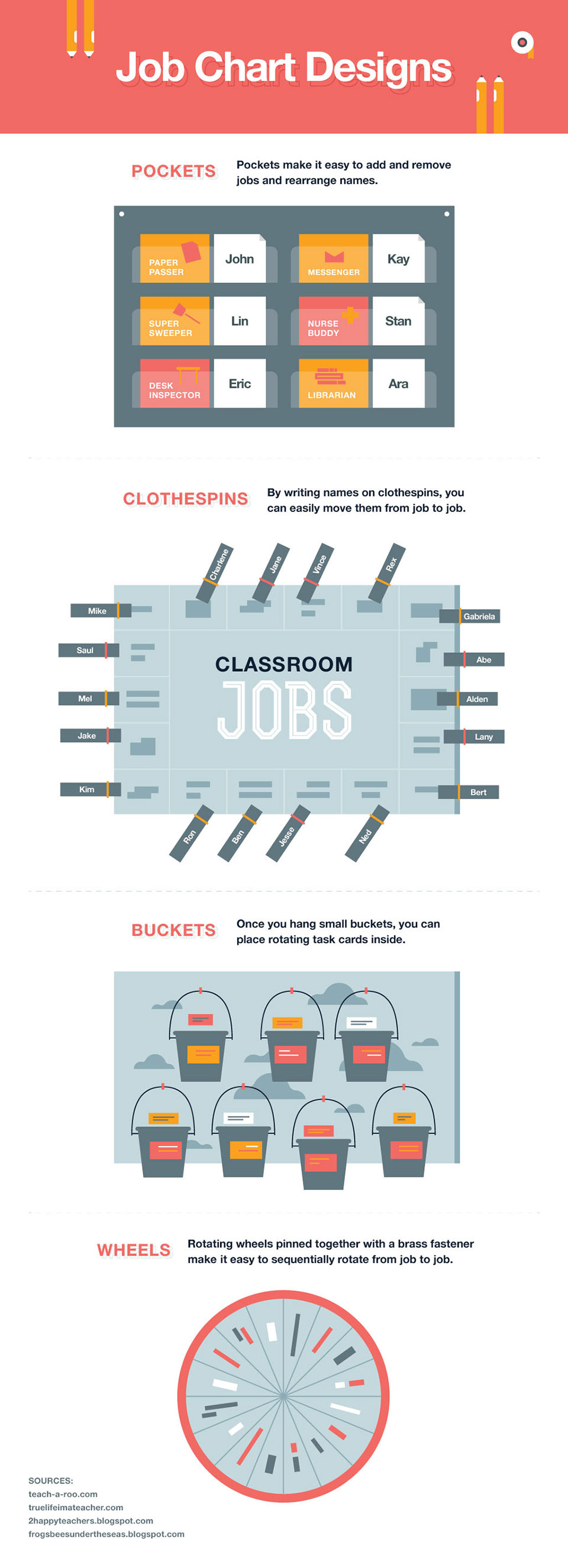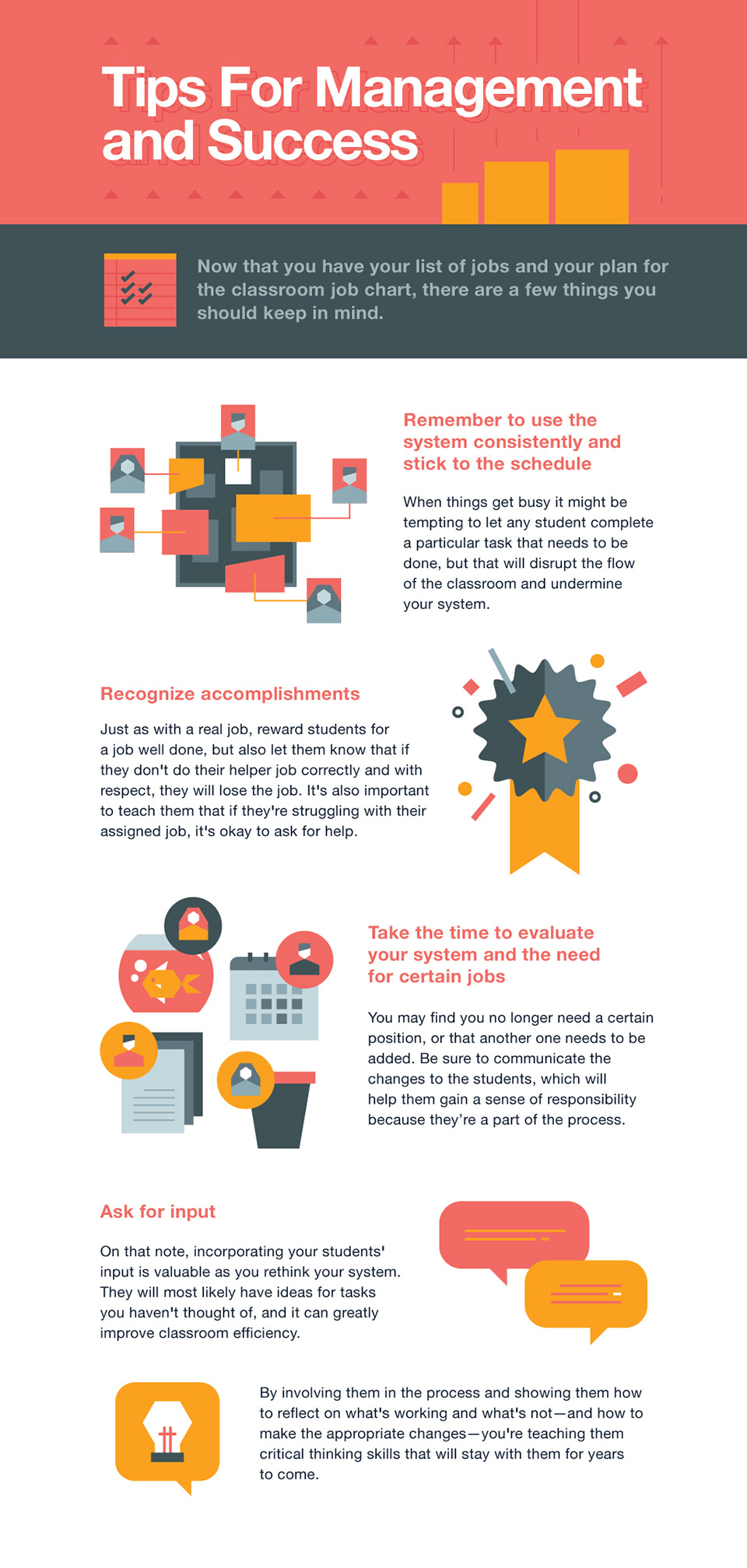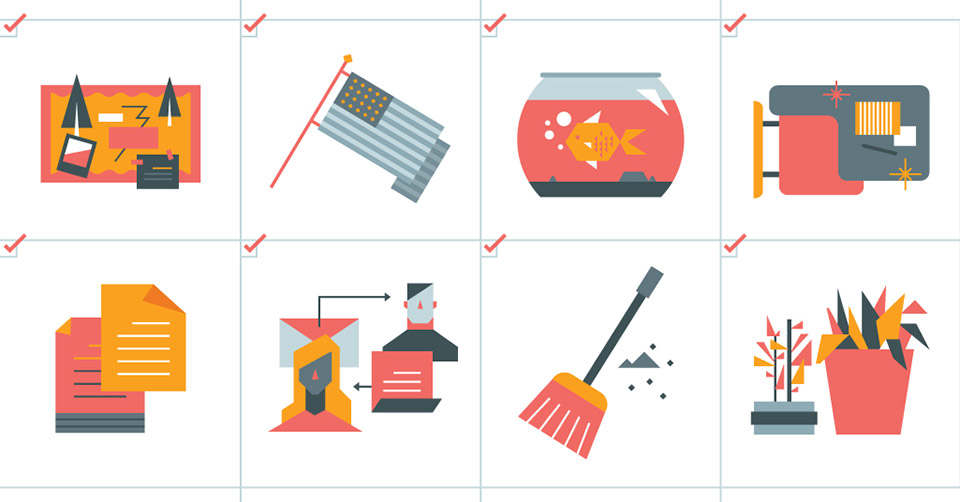As a teacher, you work hard each and every day not only to educate and shape young minds, but to keep your classroom running like a well-oiled machine. Through lessons and activities, you try to engage your students in the day-to-day tasks that are required to maintain that success. It seems you always have too much to do, and not enough time to get it done.
But the good news is that you don't have to do it alone. You can enlist your students to plan and execute a successful job chart to disperse those tasks amongst the entire classroom.
Why Create a Classroom Job Chart?
An easy way to guarantee your students take an active role in maintaining the classroom is to assign classroom jobs on a rotating basis. Classroom jobs not only help students learn about responsibilities and ownership in the classroom, they also help you check off the small jobs that eat into time better spent focusing on lesson plans and interaction.
Job charts teach students to work hard and to take pride in what they do, all while making day-to-day activities in the classroom easier for teachers. When used on a consistent basis, students will learn about responsibility and accountability and feel good about accomplishing something as a team.

How to Design a Useful Classroom Job System
There are several factors to consider and steps to take when it comes to creating and executing a successful classroom job chart. The first step is to make a list of jobs for your classroom, which we'll cover in greater detail in a minute.
Once that task is complete, simply follow the steps below and you'll be well on your way to success.
Ideate fun job chart themes
When it comes to having a theme for your job carts, the possibilities are endless. Do you want to go to the beach? Play some sports? It can also be helpful to make a chart featuring familiar positive characters students recognize, such as Clifford the Big Red Dog or a Disney hero or heroine.
Collect supplies and create your chart
Purchasing a lot of ready-made school supplies is costly, which is why it's easier, less expensive, and more fun to make your own job chart. Plus, an original handmade chart adds a personal touch you just can't find in a store.
The most common type of job chart is one that includes pockets that make it easy to organize the day's activities. Write each student's name on a craft stick and tuck the stick inside the pocket of the assigned job. Display descriptions for each job and review them with your students. Others might: Tasks go on the inner wheel and kids names go on the outer wheel.
All you need is some sturdy poster board, construction paper, markers, glue, and a few other educational school supplies to complete your chart. Take a couple afternoons to get artsy and create your masterpiece! Since it will get ample use, you will probably need to make a new one each year, but that just means you can try out a new theme with each class.
Display the charts
There are tons of ways to put your chart on display, and the best option is whatever works best for you and your classroom. Because students will move their names around throughout the year, it's important to construct a sturdy display that's easily visible throughout the room.
Helpful Classroom Jobs to Assign
As mentioned above, it's smart to start out by making a list of all the routine tasks you do in a day—chances are, it will be a long list. Think of every regular classroom task you want taken care of automatically without your direct supervision and put it on the job chart. Feel free to add and delete jobs over the months as the needs in your classroom change.
Remember to take time to demonstrate how to complete each of the various jobs so no student feels like they've been given a task they can't complete. Once you show them, they'll most likely be happy to hone their new skill.

Decide how jobs will be assigned
Speaking of assigning a particular task, there are several ways you can go about this. First, there's a rotation system so every child gets to do every job an equal number of times. This ensures there are no hard feelings or that certain students feel they've been unfairly given a task. Each student will get to experience every job on the job chart throughout the year.
The second option is to allow children to choose their own jobs. If students are more interested in a certain task, they are more likely to properly complete their job without complaint. This can work out well for students who receive a job they like but can also cause some hurt feelings if certain students are left with a job that they're just not into.
Finally, you can get students excited about having a classroom job by creating a job application. Create a list of all possible jobs on the board and have students look them over, reminding them to only apply for jobs they can handle and that fit into their schedule (consider if they have to leave class for band, if they ride the bus, etc.) Have students fill out a job application for up to three classroom positions. Once applications are handed in, go through them and decide who would be best suited for each job.

Conclusion
Regardless of the theme and system you use, make sure your classroom job chart gives every student an opportunity to shine.
Share this infographic on your site
Abby Heugel
Abby has more than 15 years professional experience and her personal work has been featured multiple times in Reader's Digest, Huffington Post, The Today Show, Vend, Shopify, and BuzzFeed, among other places. She was the editor of two specialty retail trade publications before moving on to become the associate editor of a website that was ranked as one of the top 10 mobile websites in the world. She also has an award-winning blog and more than 60,000 social media followers.


